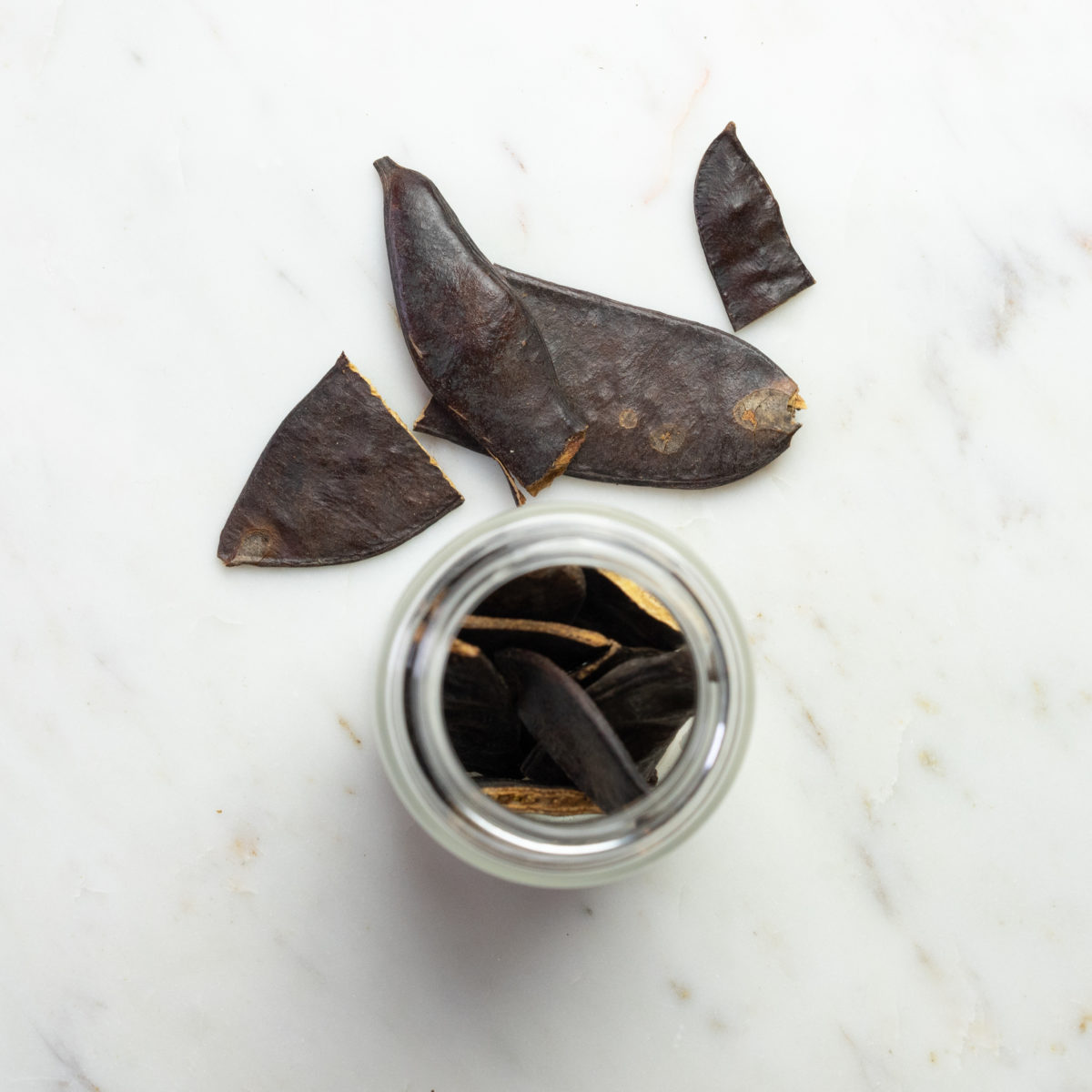
COMMON NAME (Chinese Name)
Chinese Coffeetree (Fei Zao Jia)
BOTANICAL NAME
Gymnocladus chinensis
COMMON NAMES
Chinese Coffeetree; Chinese Soap Tree; Yunnan Bean
USES
Anecdotal evidence of the medicinal properties of Chinese coffeetree pods suggests that they have significant expectorant properties. Decoctions made from the pods may also work well as an emetic and febrifuge (inducing vomiting and lowering fever), especially in cases where illness is thought to be due to something recently ingested. More research is needed to determine whether and to what degree these effects impact human health and recovery from illness. The majority of anecdotal evidence for the use of the marble-sized beans within the pods calls for topical applications, especially during bathing.
Gymnin, one of the primary components of Chinese coffeetree extract, has shown promise for use as a potent topical and oral antifungal (though much more human research is needed to determine its effectiveness and appropriate dosage). This discovery supports the historical use of dried, pounded, and topically-applied Chinese coffeetree beans as a folk antifungal and antiparasitic treatment. It also supports the practicality of using the beans during bathing.
This same derivative is thought to be responsible for the anticancer and anti-HIV properties of this supplement, which are still under clinical review. The primary bioactive compounds found in Chinese coffeetree bean extracts may also be useful in the treatment of other microbe-based illnesses, as gymnin acts nearly identically to defensin peptides.
Chinese coffeetree is little used today because of its rarity. The herb is categorized as an herb for external application, antiparasitic, emetic, and phlegm eliminating. The tastes, temperature and channel classifications are little known due to its absence from standard materia medicas, but the herb is warm and pungent and primarily affects the Lung and Large Intestine.
PREPARATION & ADMINISTRATION
Not to be confused with Chinese Honeylocust (Gleditschia chinensis), though it often is (even by industry professionals) due to the similarity of their scientific/botanical names and the great similarity of the trees’ physical appearance.
Most medicinal applications for Chinese coffeetree plants require only the use of the dried seed pods and the beans within them (also often called “yunnan bean seeds”). Aqueous decoctions are the most common preparation, though some remedies call for alcohol-based extraction or topical application of a kind of Chinese coffeetree paste.
PRECAUTIONS
Anecdotal evidence suggests that indigestion may be a common side-effect of oral Chinese coffeetree supplementation, though there isn’t sufficient modern research or reporting to support this claim. Given that there is little to no research available concerning the potential side-effects and contraindications for use, you should be careful when choosing to use Chinese coffeetree any way other than topically.
You should consult with a certified herbalist, physician or other qualified healthcare professional before taking Chinese coffeetree.
REFERENCES
Full Text of “Chinese Materia Medica”, archive.org/stream/chinesemateriame00stuauoft/chinesemateriame00stuauoft_djvu.txt.
Konoshima, Takao, et al. “Anti-AIDS Agents, 21. Triterpenoid Saponins as Anti-HIV Principles from Fruits of Gleditsia Japonica and Gymnocladus Chinesis, and a Structure-Activity Correlation.” Journal of Natural Products, vol. 58, no. 9, 1995, pp. 1372–1377., doi:10.1021/np50123a006.
Konoshima, Takao, and Midori Takasaki. “Anti-Tumor-Promoting Activities (Cancer Chemopreventive Activities) of Natural Products.” Bioactive Natural Products (Part E) Studies in Natural Products Chemistry, 2000, pp. 215–267., doi:10.1016/s1572-5995(00)80047-2.
Ma, Yan-Xia, et al. “An Anticancer Effect of a New Saponin Component from Gymnocladus Chinensis Baillon through Inactivation of Nuclear Factor-??B.” Anti-Cancer Drugs, vol. 18, no. 1, 2007, pp. 41–46., doi:10.1097/01.cad.0000236317.04199.69.
Parente, José P., and Bernadete P. Da Silva. “Bioactive Complex Triterpenoid Saponins from the Leguminosae Family.” Natural Product Communications, vol. 4, no. 1, 2009, doi:10.1177/1934578×0900400131.
TCM Wiki “Fei zao Jia” https://tcmwiki.com/wiki/fei-zao-jia
Wong, Jack H, and T.b Ng. “Gymnin, a Potent Defensin-like Antifungal Peptide from the Yunnan Bean (Gymnocladus Chinensis Baill).” Peptides, vol. 24, no. 7, 2003, pp. 963–968., doi:10.1016/s0196-9781(03)00192-x.
